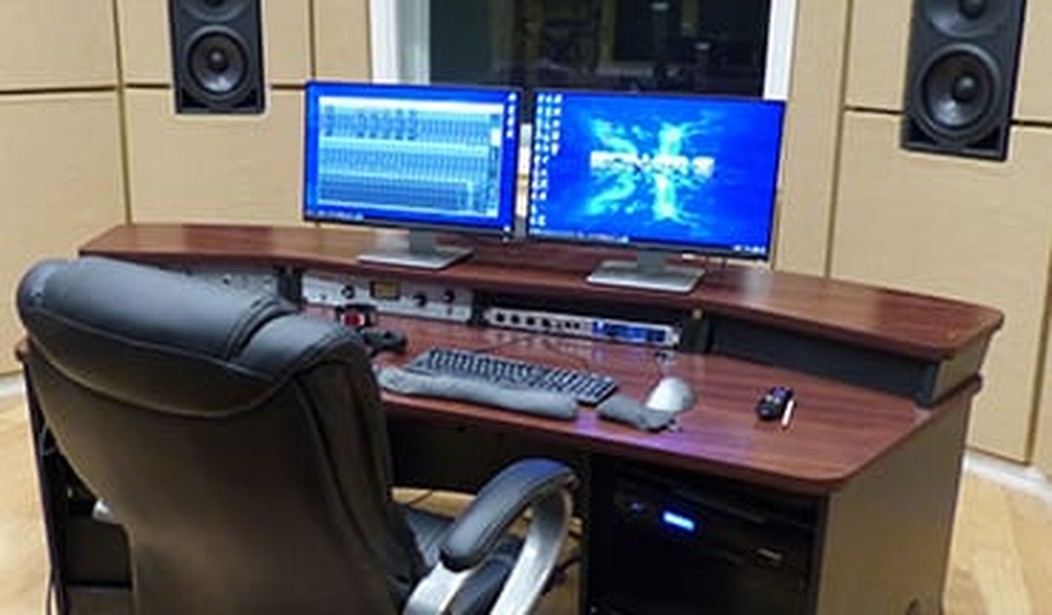In our review of Bob Simons’ Analog Recording, Using Analog Gear in Today’s Home Studio earlier this month, we discussed the concept of a “hybrid studio.” This harnesses the power of digital audio workstation software on a computer and its related plugins for their editing and processing flexibility – not to mention the ability to cleanup audio via pitch correction and programs such as Izotope RX. But adds to it the warmth of vacuum tube preamps, compressors, and other analog devices. However, once you begin to acquire a few rack-mountable components, organizing them from both an aesthetics standpoint, and more importantly, easing and enhancing your workflow becomes key.
When I built my project studio last year, I hit the ground running with the old computer desk from my den in California, and earlier this year, just plopped a Chandler Limited REDD.47 tube preamp and Warm Audio’s WA-2A tube-based compressor on top of it. But aesthetically, this was pretty darn ugly looking in otherwise great looking room. Also, it impeded my workflow by having to reach behind these units and my behind my audio interface each time I wanted to reroute the signal path. So I began to look around for a proper studio desk.
Choose Your Studio Desk Carefully
I had considered the sort of desk that Mitch Gallagher of Sweetwater installed in his home studio, but I wasn’t crazy about how it would place the knobs of my key rack mounted-equipment facing upward, rather than in front of me. In terms of ergonomics and spatial perception, it seemed a bit awkward to my personal tastes, but obviously, Mitch seems quite happy with this arrangement, so your mileage will likely vary.
Eventually, I found the Omnirax Force 32, built in my old stomping ground of Northern California. Omnirax Furniture Company makes a variety of desk models for applications in the audio and video world. They arrive flat in kit form – my desk, delivered by truck, had five cardboard boxes full of parts, as you can see in the photo below.

Given its complexity, I hired a pro to assemble it – and as the instructions warned, he needed the assistance of a second person near the end to mount the desktop to the side cabinets and kickboard. The completed desk weighs over 300 pounds and is 92” wide by 40” deep, so building it – or at least completing the assembly — in the room where it’s going to reside is highly recommended. (The desk is on wheels for minor adjustments in placing, and to access your adjacent power, data and audio lines.) My assembler told me that as long as you follow the instructions carefully, it goes together quite well. It’s built using the classic cam and pin system — but I don’t think I would recommend assembling something this complex without some qualified help. (And in any case, you’ll very likely need a second person to get the top on.)
While it cost extra, and slowed down delivery date by a few weeks, I was able to specify sides that were a couple of inches taller, as my height is all in my legs. Also, the representative from Omnirax worked with me to find a finish that matched my studio’s existing dark-stained soffits and acoustic cloud quite well.
Stocking The Racks
The Force 32 model I chose has 48 rack spaces, which includes space for four two-space rack mounted pieces of gear above the desk, and space for lesser-used equipment, or equipment that doesn’t need the same level of hands-on control on the sides. Currently, in the soffit above the desk, I have my REDD.47 pre-amp on the far-left, followed by my WA-2A compressor to its right, and my Fireface UFX+ audio interface centered in front of me. (Not surprisingly, I have a few thoughts on what will eventually go into the space on the far right, but I have a blank covering on it for now.) When recording, this is a logical workflow from microphone preamp to compressor to audio interface, and all the controls are easily accessible to dial-tweaking. Also, I keep an ashtray on the desk filled with Fender guitar picks.

There’s room on the top shelf for two 16X9 LCD computer monitors, and space for a pair of small monitor speakers such as Yamaha’s HS5 (their successor to their once ubiquitous NS10 speakers or in my case, a pair of Avantone Mixcubes (a recreation of the similarly ubiquitous Auratone 5C speakers.)
Currently, the right-hand rack under the desk holds my Sweetwater Creation Station PC, plus a blu-ray player and Roku box. On the left-hand rack under the desk, the real action is happening. At the top are a pair of Art Pro Audio 16-port XLR patchbays, which serve as inputs and outputs for all of the studio devices.

Through the patchbay, I can route mics into my REDD.47 tube preamp, or to my Neve Portico 5017 transister-based pre-amp, depending upon the coloring of the tone I prefer. (I can also plug mics straight into the four built-in pres on the Fireface interface, of course.) Either device can then be routed to the WA-2A for initial compression. audio can be taken out of the computer and processed through external devices, such as the WA-2A, or hardware based processing effects like TC-Helicon’s VoiceLive 3 device, which sits on a shelf below – or even use guitar stompboxes such as Dunlap’s Echoplex recreation for low-fi fun:
Also in this same product line, Omnirax makes a similar Force 36 model, which has two four-space rack bays and two two-space bays above the desk, but I was afraid my monitors would get boxed in. There’s the Force 40, which has four four-space rackbays above the desk, but here, I was afraid of neck strain from the resulting high monitor height, and a Force k88, with room for an 88-key synth keyboard. But I didn’t want to lose the use of the desk space after recording, and I was afraid of legroom issues caused by the slot to hold the synth.
If you’re building a dedicated project studio, particularly for your own personal use, the desk is where so much, perhaps nearly all of the action happens, from writing to recording to editing to mixing. Plus chilling out afterwards. So whatever you end up using, spend plenty of time thinking about how it will be used and then checking out your options. As anyone involved in recording for professional or hobbyist purposes knows, you’ll spending plenty of hours at the desk, so plan ahead to make your sessions the most comfortable and practical. But for my personal use, I’ve found the Omnirax Force 32 to be a well-designed, well-built desk, which both simplifies workflow, and expands the possibilities of a hybrid analog/digital studio.











Join the conversation as a VIP Member